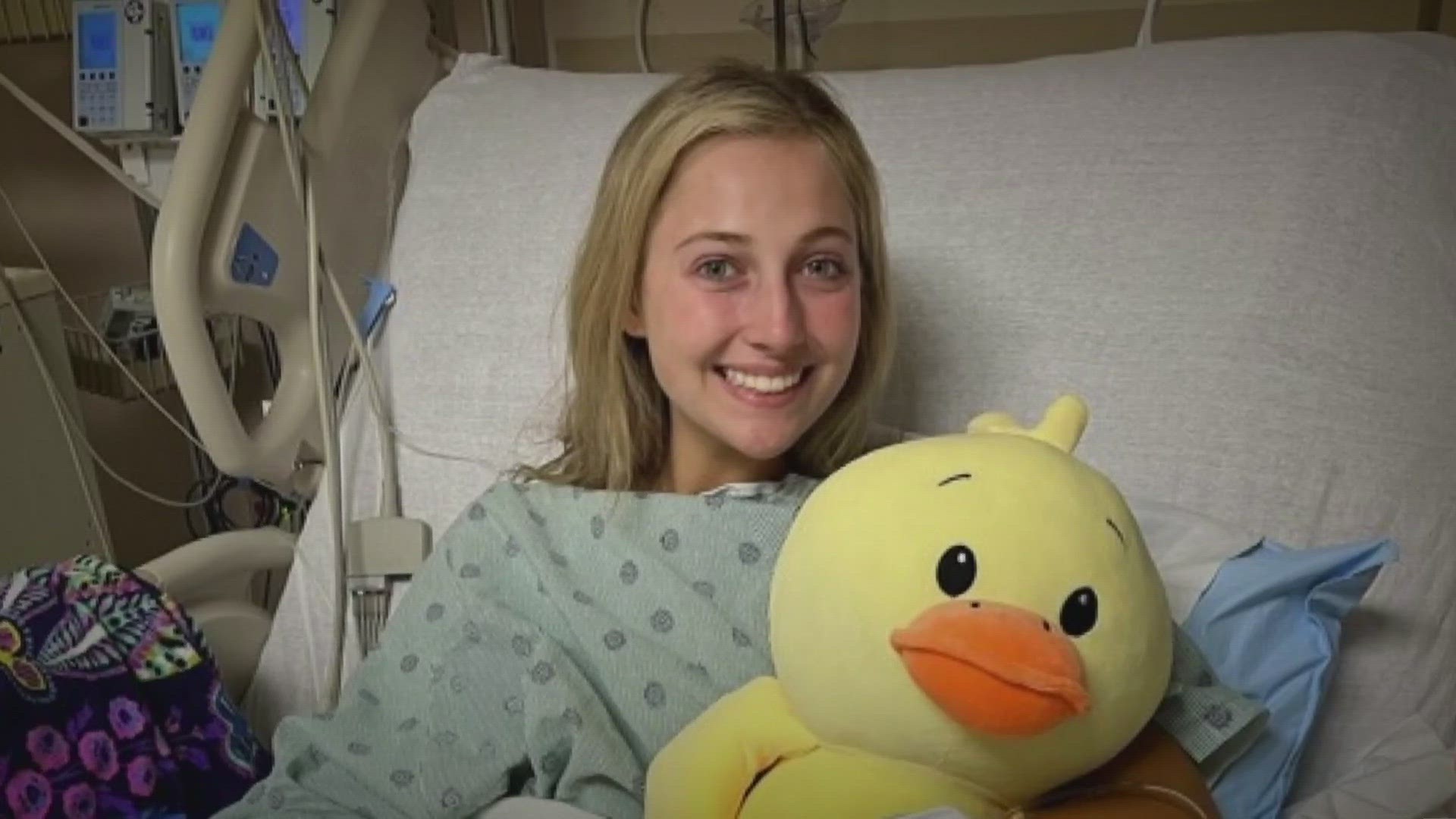NEW ORLEANS — An LSU student who just finished her freshman year says new friends she met in college, think she's joking when she says she's a stroke survivor.
But she's not kidding. Now the student and her doctors explain what happened, and why it can happen to someone so young and healthy.
It was Easter morning 2022 when Tatum Clouatre's little sister told their dad, something is wrong.
“I remember my dad saying, ‘Call 911. Tatum's having a stroke.’ And my mom was just like, ‘No, she's not. No, she's not,’” remembers Tatum Clouatre,19.
That’s because Tatum was only 18 at the time and about to graduate from Mount Carmel, but her arm wasn't working. Her speech was making no sense, and her reasoning was off.
“We got in the ambulance, after they arrived to our house. We, and my mom and I, we said Hail Marys the whole way.”
In the East Jefferson General Hospital emergency room, a look at blood flow in Tatum's brain revealed she had a stroke.
A look at her heart revealed why someone without the usual risk factors of advanced age, diabetes, high blood pressure and cholesterol, heart or kidney disease, obesity, and smoking could be having a stroke.
There was a hole between two chambers of her heart. It's normal before birth, but is supposed to close afterwards.
“In 25% of the population, that hole doesn't close, and remains open, and some people can have emboli that crosses that hole, and goes to the brain, causing what we call now a stroke,” explained Dr. Pedro Cox, an Interventional Cardiologist at East Jefferson General Hospital who is also an Associate Professor at LSUHSC.
Dr. Cox fixed that hole in Tatum's heart at Children's Hospital. In the cath lab, he threads a tube through her vessels, entering in the groin area.
When it goes through the hole, a patch is opened and deployed on each side of the hole, sealing it forever.
“By closing the hole, we're able now to reduce her risk of having a recurrent stroke by a lot,” Dr. Cox said.
Director of the EJGH stroke program, Dr. Enrique Segura, says what saved Tatum from permanent brain damage was getting her to the E.R. fast.
“One of the reasons she has such a good outcome was the fact that her family was able to identify those symptoms of a stroke,” said EJGH Neurologist Dr. Enrique Segura, who is also on the Tulane Medical School faculty.
The family knew the warning signs because Tatum's grandmother had strokes, twice. One was scary for Tatum to see. She was only in grade school.
“And we recognized it because she was slurring her words. Her hands were shaky. She couldn't really, she wasn't really communicating,” remembers Clouatre.
Tatum just finished her freshman year at LSU. She is grateful for nurses, like her longtime friend she calls “Miss Terry” and the doctors for completely giving her back her life.
“I just think it's not a coincidence this happened on Easter Sunday. I am just blessed to be here because, if it wasn't for my faith, I just feel like there's no way I could be processing this as well as I have, but I definitely owe a lot,” she said.
The signs of a stroke can be remembered by the "BE FAST" acronym, which stands for problems with Balance, Eyes, Face, Arm, and Speech, and little time to waste in getting to the emergency room.
► Get breaking news from your neighborhood delivered directly to you by downloading the new FREE WWL-TV News app now in the IOS App Store or Google Play.

